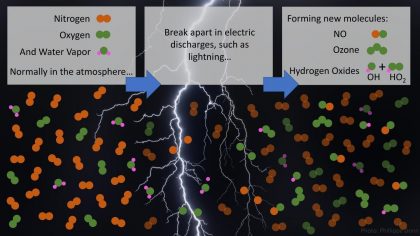ARL Weekly News – May 14, 2021
| Recent Events |
Papers Published
Patrick Campbell coauthors a recent GRL paper: US COVID-19 shutdown shows importance of background NO2 in inferring nitrogen oxide (NOx) emissions from satellite NO2 observations. http://dx.doi.org/10.1029/2021GL092783
Abstract: Satellite nitrogen dioxide (NO2) measurements are used extensively to infer nitrogen oxide emissions and their trends, but interpretation can be complicated by background contributions to the NO2 column sensed from space. We use the step decrease of US anthropogenic emissions from the COVID-19 shutdown to compare the responses of NO2 concentrations observed at surface network sites and from satellites (Ozone Monitoring Instrument [OMI], Tropospheric Ozone Monitoring Instrument [TROPOMI]). After correcting for differences in meteorology, surface NO2 measurements for 2020 show decreases of 20% in March–April and 10% in May–August compared to 2019. The satellites show much weaker responses in March–June and no decrease in July–August, consistent with a large background contribution to the NO2 column. Inspection of the long-term OMI trend over remote US regions shows a rising summertime NO2 background from 2010 to 2019 potentially attributable to wildfires.
Guidance for PAHO on Volcanic Eruptions in The Caribbean
Daniel Tong and Alice Crawford provided updates to a Pan American Health Organization (PAHO) advisory following the La Soufrière eruption in St Vincent and the Grenadines. In addition to monitoring the activity, Daniel provided a list of Satellite and Modeling Tools for use by emergency managers.
Science Magazine paper on Lightning Production of Oxidizing Molecules.

Nitrogen, oxygen and water vapor molecules are broken apart by lightning and associated weaker electrical discharges, generating the reactive gases NO, O3, HO2 and the atmosphere’s cleanser, OH. Credit: Jena Jenkins, Penn State
A follow up story appears now on ARL’s website: Lightning Produces Molecules that Clean Greenhouse Gases from the Atmosphere

